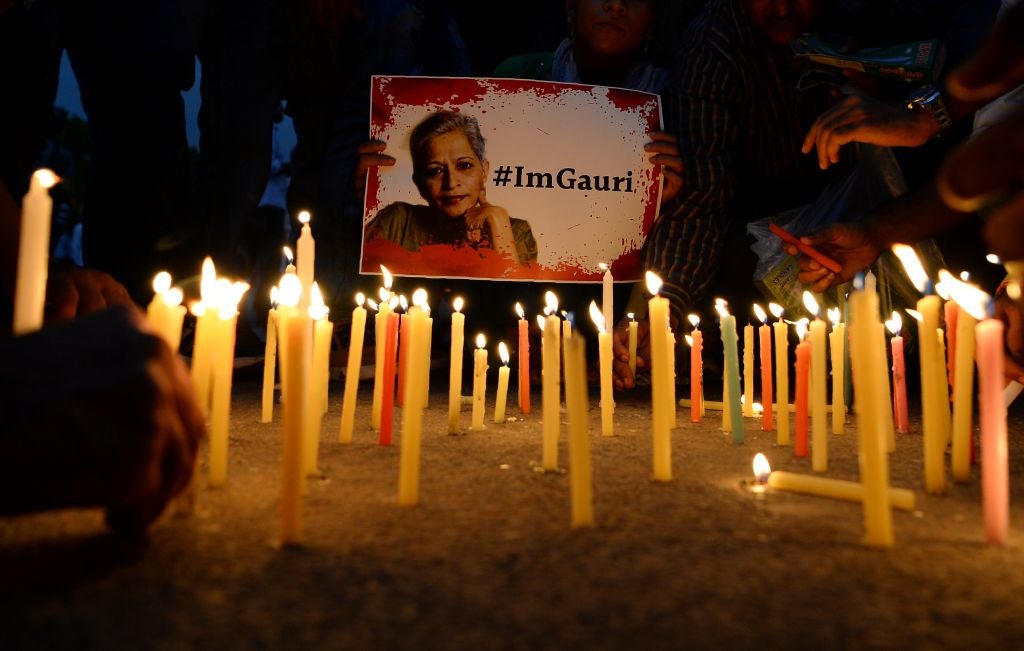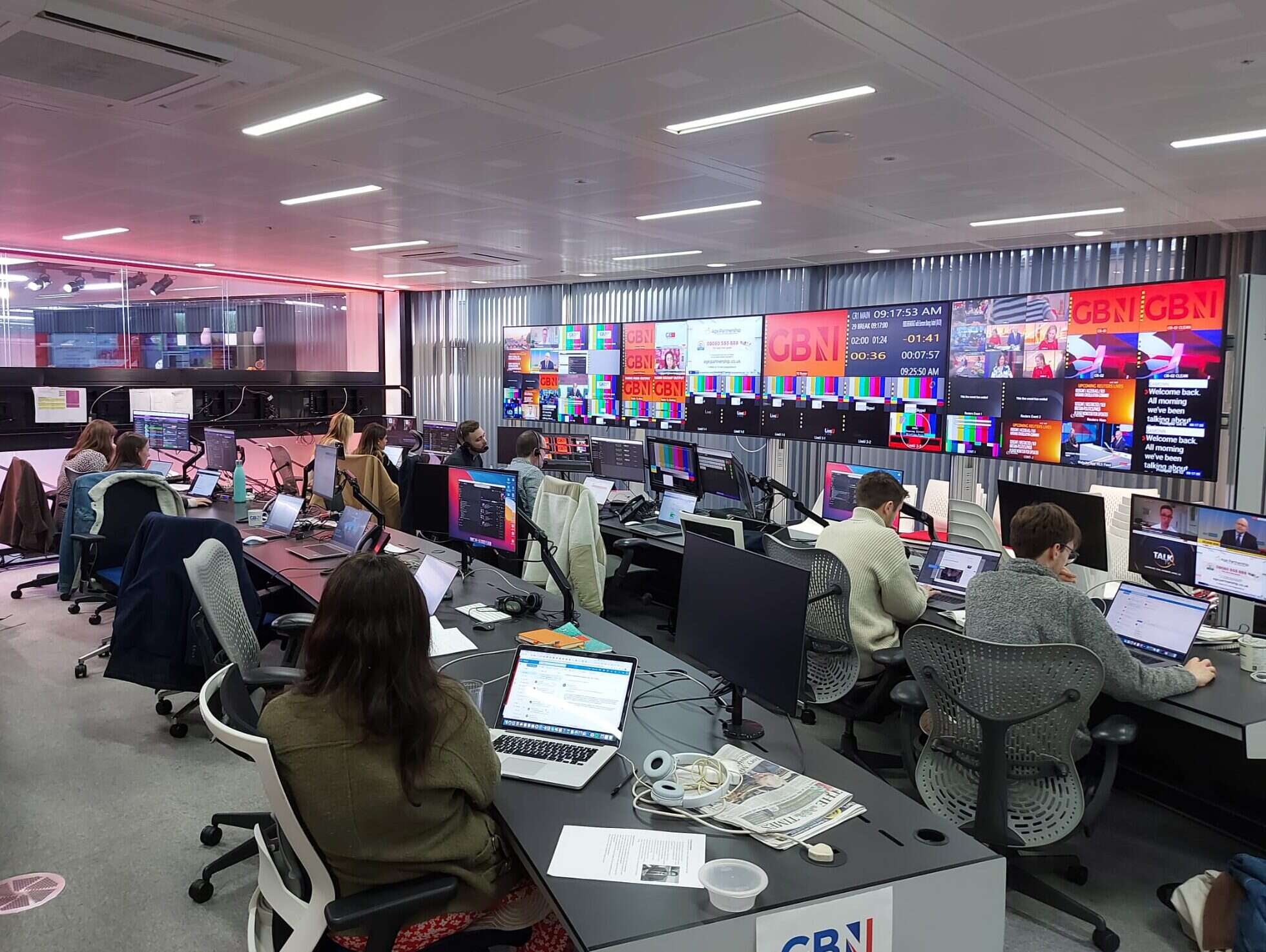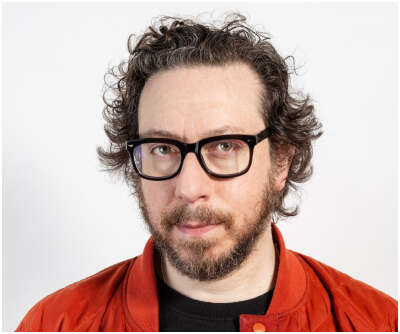
We chart the decline of press freedom in India under prime minister Narendra Modi’s seven years in charge.
Journalist Prashant Kanojia was asleep when police arrived to arrest him at his Delhi home last August. His crime? Tweeting a photo with the alleged aim of inciting tension between India’s various communities.
Press Gazette’s analysis of the worsening press freedom situation in India shows this is a far from isolated incident, but rather part of a widespread crackdown on the fourth estate in the world’s biggest democracy.
Kanojia was bundled into a van and taken to a police station in the neighbouring state of Uttar Pradesh (UP). While in custody, he says he was beaten, tortured with electric shocks and deprived of food and water. He was then taken to jail where he remained for 80 days before being released.
His 2020 arrest was not the first time that the freelance reporter has invoked the ire of the authorities. In 2019 Kanojia was arrested for a tweet that the UP police claimed had insulted the state’s hardline chief minister. He was freed the following week following an order by the Supreme Court.
His arrests were, he believes, prompted by his critical reporting on the government.
“I used to get small threats from the administration saying ‘you need to look at yourself because the way you are reporting on us is going to harm you somewhere’,” he says.
Kanojia has highlighted the government’s treatment of minorities – including the oppressed Dalit community to which he belongs.
“Being from an oppressed community, you can’t just be a journalist because you have to fight for this space right from newsrooms to the street because you feel that sort of prejudice every day,” he says.
While Kanojia has suffered both physically and emotionally for his work, he believes he has escaped lightly compared to some journalists.
“My name sounds Hindu and that could be a reason that I only got electric shocks or maybe the beatings,” he says. “If I would have been Muslim, they might have shot me dead.”
Press freedom in Indi has been in decline since Narendra Modi’s rise to power in 2014, with news culture taking on what Kanojia calls an increasingly “vicious” tone.
In 2021, the country came 142nd of the 180 countries in Reporters Without Borders press freedom index for the second year in a row – its lowest position since RSF began producing the ranking in 2002.
“Before Donald Trump came to power, before Erdogan became what he became in Turkey, before Bolsonaro came to power in Brazil, Modi was one of the first leaders or strong men who had some kind of contempt for press freedom,” says Daniel Bastard, Asia-Pacific Director at Reporters Without Borders (RSF). “Modi doesn't tolerate journalists as intermediaries between the power and the people. He uses Twitter and through it there is a fake, direct link between the voters or his supporters and the strong man.”
Journalists in India face increasing crackdowns and constraints, including police violence and ambushes by political activists prompting RSF to label India “one of the world's most dangerous countries for journalists”.
Since 2000, 51 journalists have been killed in the course of their work in India - almost half (22) under Modi’s tenure alone. One of the most notorious killings was that of Gauri Lankesh, 55, a newspaper editor who was critical of Hindu nationalists and was assassinated outside her home in 2017 by gunmen on a motorcycle.
While press freedom in India has been in decline for several years, the situation has further worsened during the pandemic.
Since last March, 246 journalists have died as a result of Covid-19 - more than any other country, according to NGO Press Emblem Campaign.
“It’s a major concern, especially during the second wave that started in early April,” says Bastard.
“The situation for journalists at the moment in India is very tragic. On one hand, it’s their duty as journalists to report on what is happening with the second wave and the dramatic humanitarian situation, but it’s also their citizen duty to protect themselves and the whole population. That's why it's really important that the government and media houses provide protection devices for journalists who go to report on the ground,” he adds.
[Read more: Press Gazette Media Freedom Health Check: 70% of world's population has little media freedom]According to Laxmi Murthy, a journalist from Bangalore and editor of the International Federation of Journalists' report on press freedom in South Asia, many of these deaths were “totally unnecessary”. She says some media outlets refused to allow reporters to work from home - while those that did sometimes faced salary cuts.
As well as Covid-related deaths, data from advocacy group The Free Speech Collective also shows a sharp uptick in assaults on the press during the pandemic. Of 154 journalists who have been arrested, detained, interrogated or served 'show cause' notices for their work since 2010, some 40% (67) were in 2020 alone.
One key way journalists are targeted is through overuse and misuse of laws, says Murthy. Until recently, journalists largely escaped the attention of the criminal justice system however, laws including colonial-era legislation such as the sedition law are being used to silence the press.
“Allegations of misinformation for instance are used to shut down critical reporting, so the minute you say this is misinformation that particular journalist gets booked for fake news,” she says. “Journalists have been booked under the Epidemics Act and under the Disaster Management Act for spreading ‘misinformation’ about things like oxygen shortages, lack of beds and corruption in public distribution systems.”
New laws purporting to regulate social media and telecommunications are being used to clamp down on digital outlets and social media platforms which Murthy says were harder for the government to police under existing laws.
“Clamping down on digital media is less easy, which is why there are all these new rules,” she says. “They are rules to essentially control, while they're calling it regulation.”
New legislation giving the country's government more power to regulate content on social media has prompted a backlash from platforms such as Facebook and Whatsapp. The rules also allow officials to block publication of certain stories or even shut down websites.
One outlet that has repeatedly found itself in the government’s sights has been investigative magazine Caravan. Executive editor Vinod Jose currently has ten sedition charges against him in five states. The outlet’s owners have also been booked under the same law.
It’s no coincidence the outlet has been targeted, says Jose.
“The legacy news media chose to be quiet,” he says. “Caravan chose to continue [reporting] in the same way that it has in the past which would put it in confrontation with the government. It's consistent, critical coverage on the Modi administration.
“The government is probably suddenly conveying a message to us directly but also, by way of targeting us, there is a message for all journalists who are inclined to pursue critical stories,” he adds. “That messaging is to the publishers, the industry at large and to the individual reporter. And that's quite evident.”
Yet while the subscriber-first models of smaller outlets such as Caravan allow them more space, the ownership structure and money-making strategies of legacy outlets are more constraining.
“Even if you have a lot of media outlets they are very concentrated in the hands of a few and these few are highly politically affiliated,” says Bastard. “And the more you go into local media the stronger the political affiliation is.”
A 2019 study by RSF and Indian digital media company DataLEADS found that although the country as of 2018 counted 118,239 print publications, more than 550 radio stations and over 880 satellite TV channels, ineffective competition laws mean that the space for media was increasingly tight.
“There is no room for press freedom - journalists must be soldiers of the ruling party and if they don't support the government, they are deemed anti-national, anti-government and anti-India,” says Bastard. “Many mainstream media who are owned by big multinationals are now leaning towards the BJP and even more specifically Modi as he has managed to establish very close links with moguls... and that's a new trend I think.”
[Read more: Investors do not appear to care about media freedom - but they should]
One key way the government in India has controlled media is through pressuring advertising budgets. The state is a significant advertiser and outlets that don’t toe the official line on issues such as Kashmir can be penalised, says Murthy.
“The advertising chunk is really going to compliant and pro-government media,” she says. “The media really is tiptoeing around any issues which matter today and it's very easy to control and clamp down on them.”
Data from research organisation, V-dem Institute shows that media self-censorship or willingness to criticise the government have deteriorated sharply since 2014.
But despite its clampdown on media, an image-conscious Modi government is keen to preserve appearances of a free press, says Bastard.
In 2020 following RSF’s decision to downgrade India in its press freedom index, Modi’s government set up a committee to try to find ways India could improve its position in the ranking.
But the efforts, says Bastard, are disingenuous.
“They are trying to pressure us in order to give India a better ranking,” he says. “But the problem is that they're not doing really anything concretely to better this ranking. It’s really a public relations operation and it really lacks sincerity.”
Finding his freelance commissions dry up since his arrests, Kanojia is taking a break from reporting and has since turned to politics in an attempt to, among other things, improve the environment for free expression in India.
“Journalists should be safeguarded - they are a very important part of our democracy,” says Kanojia. “If the judiciary is protected, if the legislative is protected, if our administration is protected, why is this part of democracy constantly attacked by the government?”
Photo: A protest rally against the killing of Indian journalist Gauri Lankesh on September 6, 2017. Getty Images/ AFP Contributor
Email pged@pressgazette.co.uk to point out mistakes, provide story tips or send in a letter for publication on our "Letters Page" blog






